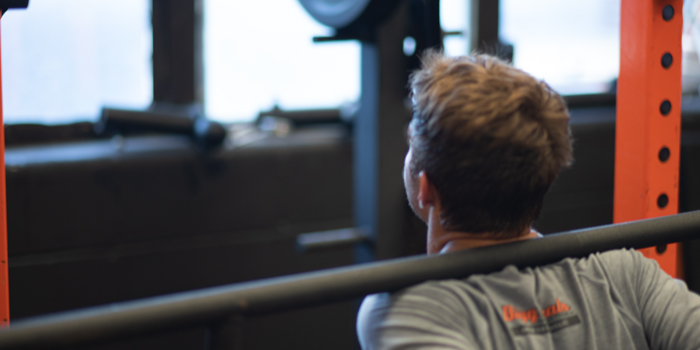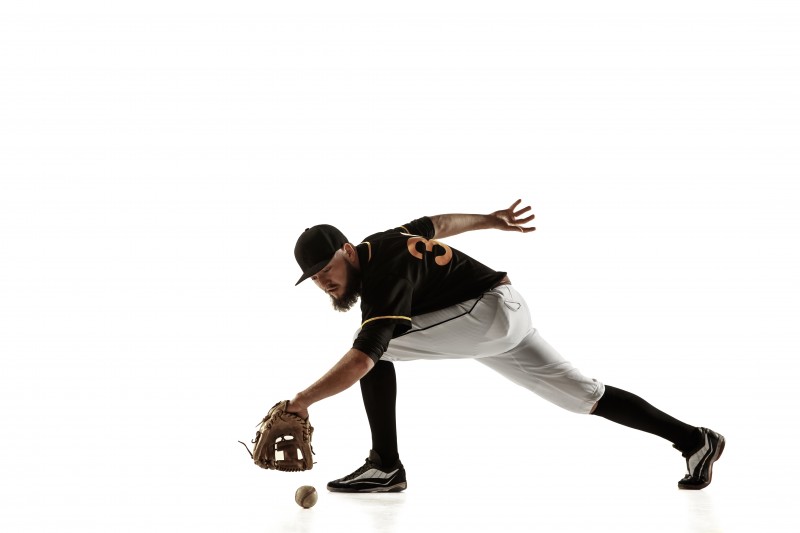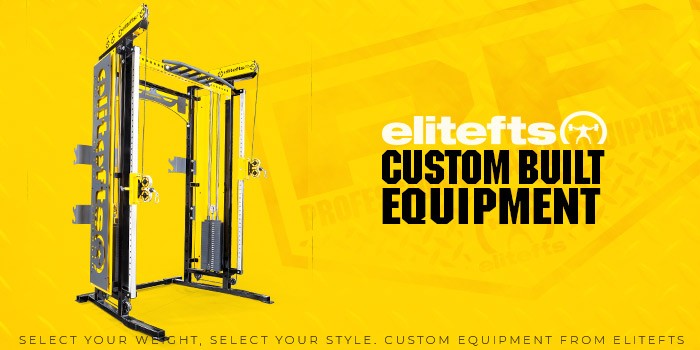
If you are a strength and conditioning coach, a needs analysis is the foundation of everything you do. You will identify the most important actions and demands of the sport and then narrow down what you need to focus on when creating the program. A key component here is the specificity of evaluating weaknesses. If you finish your needs analysis and have only determined that your athletes are too weak, you haven’t set yourself up well for when it comes time to create your program. Which muscle group is weak? In which position? During what velocity? You will have to work to narrow down the problem as much as you can to know exactly what you need to change to improve the athlete.
Once you know what you would like to evaluate, make sure the evaluation method you use actually lines up well. Measuring a rower’s endurance with a testing protocol conducted on a treadmill doesn’t do you any good, even if you correctly matched up the other variables. In case you weren’t aware, the skill element of a VO2 max strongly influences the result. Runners saw a 10.5 percent difference between the VO2 max measured on a treadmill versus a bike, while cyclists averaged a 2.8 percent difference versus an average of around 6 percent typically. There are three elements of effective measurements: validity, reliability, and objectivity.
RECENT: A Beginner's Guide to Programming Conjugate for Strongman
As we can see in the given example, choosing the wrong test fails to provide valid results. We can end up measuring different traits like running or cycling skill and efficiency. A step further in scrutiny reveals you may not even want to be testing VO2 max at all. Many sports would be better measured by testing the running speed at which the lactate threshold occurs. Whether or not a measure is reliable should seem intuitive, but if you’re relying on technology to measure performance, there is often research done to validate the accuracy of anything more than a few years old. If you can, cut out things easily influenced by user error like stopwatches or eyeball tests. Strength coaches often pride themselves on evidence and objectivity but often fall short and rely on feeling more than they would claim. More importantly, even where we feel most confident in areas that should be the most important to us, we aren’t even coming close to being correct. Specifically, you are way worse at predicting ACL injuries than you think. Shockingly, most strength coaches do not operate with an infinite budget and must make many compromises, so striving for consistency is key.
Volodymyr Melnyk © 123rf.com
Athletes Need To Be Better at Their Sport
The answer to this question seems intuitive but seems to sneak up on you anyways when you love the weight room. Strength coaches can usually agree that to an extent, things like sprint speed, maximal strength, and vertical jump often factor in to or do well to predict athletic performance. But if you’re like me and you love improving athletic abilities for the sake of athletic abilities, we need to check ourselves before we get carried away.
If you get hurt, your athletic prowess is temporarily screwed. But fret not, a D1 wrestler who had severely injured his knee was able to add 70 pounds to his back squat just by training hamstrings, glutes, back, and core! Awesome right? Not really. He wasn’t able to wrestle for any of those months. While it’s hard to disagree with a giant squat PR, he likely made negative progress in the sport he competes in. This is an extreme example, but it serves the point well. An athlete's job isn’t to become a better vertical jumper or a better mile runner (unless these are actually their sport). Don’t sacrifice progress in your actual performance for progress in what is only a proxy measure for better sports performance.
Now onto the bastard child of athletic weight room things. I’m sure to ruffle some feathers with this, although we can all agree this category exists. They are the things that are performed in the weight room with a strength and conditioning coach that don't have a highly specific physical trait or trackable measure per their sport. These things are speed ladders, BOSU ball squats, burpees, and if you really want to start a fight, power cleans. They blur the line between training GPP and SPP and only detract from actually focusing on what your goal is at the time. The reasoning behind their implementation often doesn’t stand up to a ton of questioning. It’s better to have a highly specific measurement of improving a general trait, than to have something that serves as a shotgun blast of things you hope actually transfer to something. While a lot of people can get together and laugh at the implementation of these things, we see them pop up continuously, and they stem from not sitting down and asking ourselves what we need to do to get better on a deeper level. This is where the benefits of well-executed scientific methods and questioning can be implemented. Sports science is plagued by the same fallacies that sports training is. No one is asking the right questions, and as a result, we get useless or detrimental answers in return. The best thing you can do for your argument is trying to destroy it. Ruthlessly pick it apart with intense questioning, and only when it can actually stand up to it will it be of any use to you. If you know the exact counter-arguments to yourself, you can set yourself up in the best position to avoid those pitfalls and weaknesses.
What do athletes actually need? To be better at their sport.
The Power of Strength
If you’re reading this, hopefully, you know strength is the godfather of all other traits. Without any strength, we have no speed or power. Endurance relies on a base level of strength—the shorter the duration even more so. Our ability to resist injuries relies on a baseline level of strength found in our muscles and connective tissues. But even being the foundation of other traits does not create a total replacement. As much as strength coaches wish it were so, strength is only part of the equation when an athlete goes to sprint, throw at high velocities, change direction, jump high, and reach extreme ranges of motion. These are both based on physical properties independent of strength and the skill involved in doing these actions if they don’t occur at high frequency in your weight room. There are some even some athletes lucky enough to have reached high levels of sport with zero weight training, and the data shows there is no replacement for the sheer volume of hours spent preparing for each specific task.
Variation in Muscle Functions Per Sport
Strength training is, by definition for most athletes, general physical preparation. These days, most young athletes are overspecialized and overly lacking in general physical preparation anyways, especially maximal strength. So throwing just about any halfway decent program at them in the beginning, is enough to see a huge chunk of benefits. That being said, it’s very odd when strength programs for athletes start to resemble a body part split. Is this just the doing of America’s roots in bodybuilding? I don’t think maxing out the hamstring curl machine will have as much transfer to your triple extension as some people seem to think. Just because you felt a burn in the muscle group you think you need doesn’t mean you’re going to see a transfer to your performance. As we get better, we need to know exactly the goal we aim to improve (have I hammered home what this article is about yet?). If we want to get better at stabilizing our torso, crunches probably aren’t helpful. If we need to improve our leg cycling rate during sprints, RDLs ain't going to cut it. In general, we often are only doing exercises where we focus on extreme stability and a lower range of motions than the top demands of sport. We do not prioritize pelvic and spinal range of motion and control, high force impulses, and isometrically resisting force.
Key Performance Indicator
Key Performance Indicator (KPI) is a term borrowed from the business world but ever relevant in the weight room. Given that the weight room rarely represents the actual sport of an athlete, we are forced to try to determine what will actually have carryover. Typically a strength coach will have some sort of testing day or week to measure all the exercises deemed important for athletes. The problem is they often make very little sense. Miles runs, max push-ups, max sit-ups are all really simple to implement but tell us almost nothing about success in most sports. Then we start seeing things like 40 yard dash times, max bench press, vertical jump measures, which are much closer and still frequently misapplied. A 40-yard dash tells us a lot in sports where you only run straight lines in distances close to 40 yards. A max bench press tells us a lot in sports where you push heavy things in the transverse plane. A vertical jump tells us a lot about explosively generating power in the lower body but very little about our explosive power in the upper body. If you are trying to use the same KPIs for every sport, you will probably do yourself a serious disservice.
Once we have accurate KPIs picked, what are the KPIs for your KPIs? In other words, what builds the things that build your sport? You will likely need to train something other than the KPIs themselves eventually. And if something isn’t a KPI or improving a KPI, why are you doing it?
What Effective Training Looks Like
What does an athlete think they need? The first problem when working with anyone is getting on the same page with them on what effective training looks like. You have to figure out what they expect out of you on day one. Oftentimes, the first thing anyone does is immediately start trying to convert them into their own viewpoint. While this is easier for the head football strength coach with the “my way or the highway” approach, it is ineffective. Communication is a two-way street, and if you are a silver-tongued master of persuasion and you can get everyone on board completely on the first day, more power to you. But you will need to listen to them as well. At the end of the day, you both have to agree on what you will do at some point. Otherwise, you have someone along for the ride that doesn’t think they are getting the best training they can. No matter the importance of any physical ability, confidence beats them all by a mile. Would you rather have 99 percent optimal training with 100 percent confidence in their performance or 100 percent optimal with 25 percent confidence? 90 percent optimal training? 80 percent?
On the topic of confidence, perhaps strength coaches have been too confident. When not in your athlete's shoes, it is easy to think you know more than they do. For the science and art of training, you would probably be right. But I’d wager without listening to your athletes at all; you are creating this suboptimal program you feared. Ashley Jones, experienced rugby S&C coach and elitefts columnist, sheds light on how he implements the athletes into the decision-making process. He meets with his athletes once a month to discuss how they think the training has been going and what they should implement moving forward. Has the workload been too high? Too much heavy lifting? Not enough plyometric work? If they know a certain trait or skill is their weak point, it is probably wise to listen! Even if they think the problem is worse than it is, their concerns shouldn’t go unheeded. Ashley is highly intelligent and does an excellent job of educating his athletes, which makes this process easier. I believe everyone should establish a relationship to accept as much athlete input as they can.
The odds are high that they know better than you do. Even if they don’t, you have to agree on what you will work on at some point. Confidence has more impact than any other physical trait, so make it work somehow.
Once you’ve gone through the arduous (and never-ending) task of sifting through every decision involved in the programs you’re currently creating and implementing, you’ve hopefully reevaluated some choices you’ve made and formed a better program. Moving forward, if you can back every implementation with a good reason that holds up to every level of questioning, you’ll have a program you can say with 100 percent faith is the best choice for this situation.
References
- Lehman, Graeme, et al. “Correlation of Throwing Velocity to the Results of Lower-Body Field Tests in Male College Baseball Players.” Journal of Strength and Conditioning Research, vol. 27, no. 4, 2013, pp. 902–908., doi:10.1519/jsc.0b013e3182606c79.
- Wilson, Robbie S., et al. “Individual Performance in Passing Tests Predicts Age‐Independent Success in Small‐Sided Soccer Possession Games.” Translational Sports Medicine, vol. 3, no. 4, 2020, pp. 353–363., doi:10.1002/tsm2.142.
Mason Nowak holds a BS in Kinesiology from Iowa State and is a strongman and strength and conditioning coach. He recently held an editorial internship at elitefts.












2 Comments